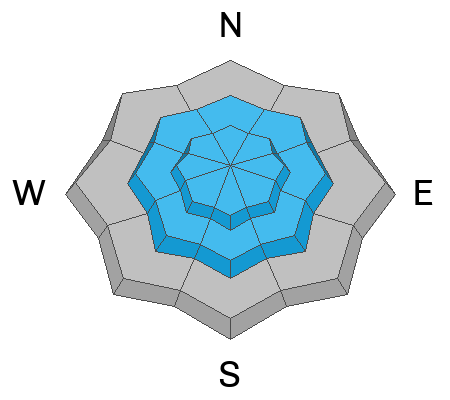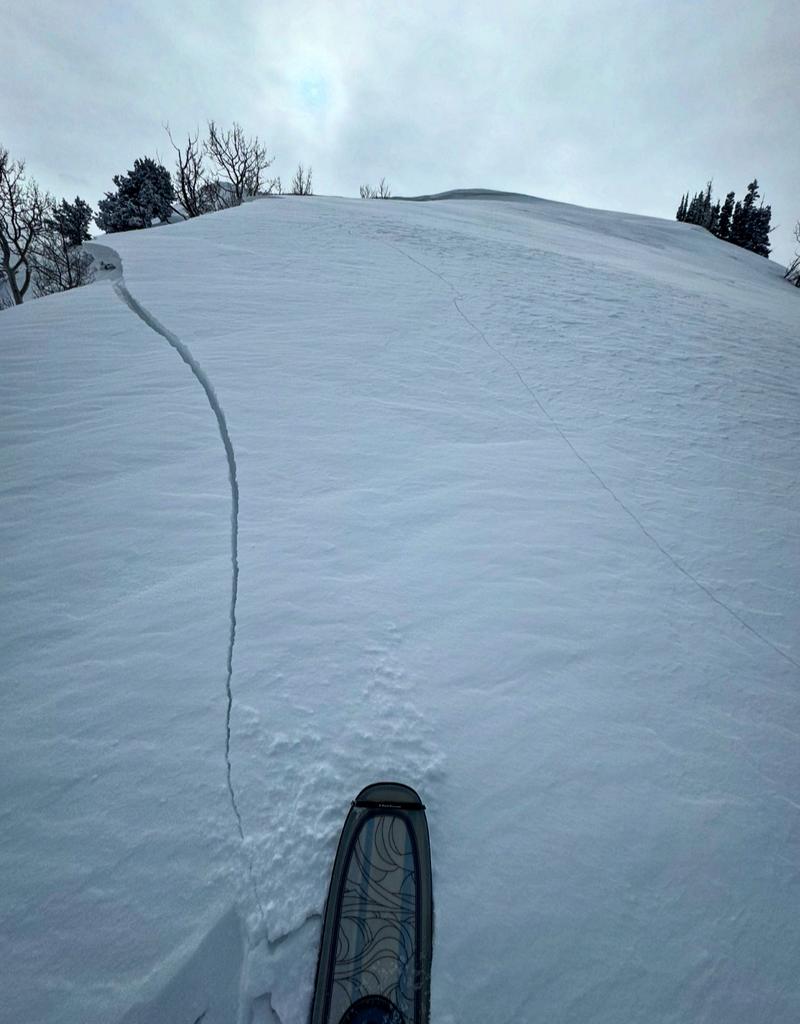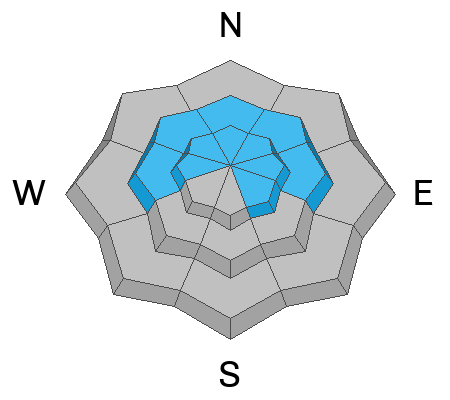The Preliminary Report for Monday's Monte Cristo avalanche fatality is
HERE. Our condolences go out to the victim's friends and family and all those affected by this tragic accident. UAC staff visited the site on Tuesday and a full report is forthcoming.
This morning: Temperatures are 25-30° F, and winds are from the south and strong - gusting into the 40's and 50's mph along exposed ridges and summits above 9,500'. This is ahead of a cold front expected to arrive by early afternoon. Some graupel has been reported.
Today: Temperatures will rise only a few degrees and light snowfall is possible this morning, with steady snowfall beginning early afternoon. Winds will remain strong as they veer from south to west, and finally northwest by early evening. The rain/snow line will start around 7,500' and drop through the day, with periods of heavy snowfall possible this afternoon. Snow may continue into the evening in areas favored by a northwest flow, such as Little Cottonwood. 6-10 inches of new snow is expected by Saturday morning.
This Weekend: Sunny with seasonable - finally! - temperatures through the weekend. We may see some light snow showers mid-week, with an active weather pattern possibly returning by late week.
Be sure to read Nikki's
Week in Review and make it a regular part of your backcountry planning.
No backcountry avalanches were reported from Thursday, although we continue to receive reports of avalanche activity from earlier this week, including widespread natural activity in
Broads Fork,
Donut Falls (Cardiff Fork), and
Lucky Days (Days Fork), with most of this activity involving wet snow.













